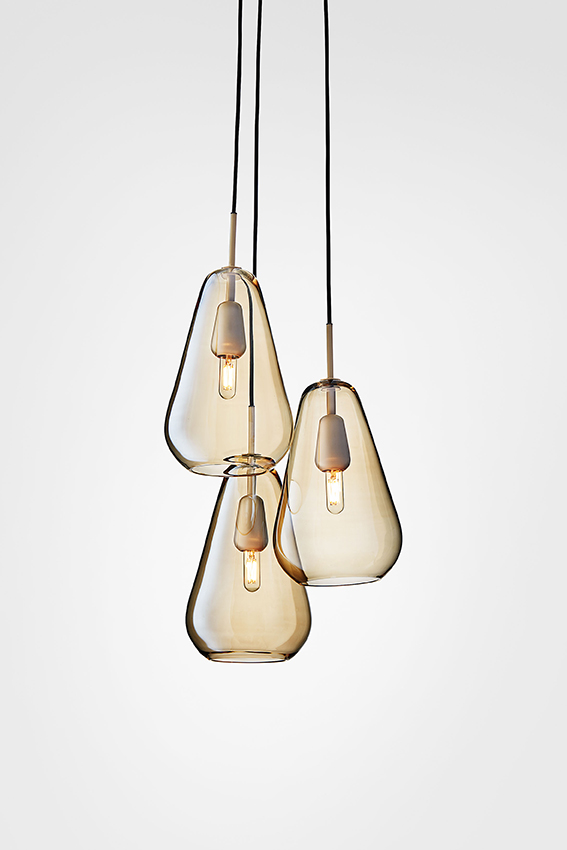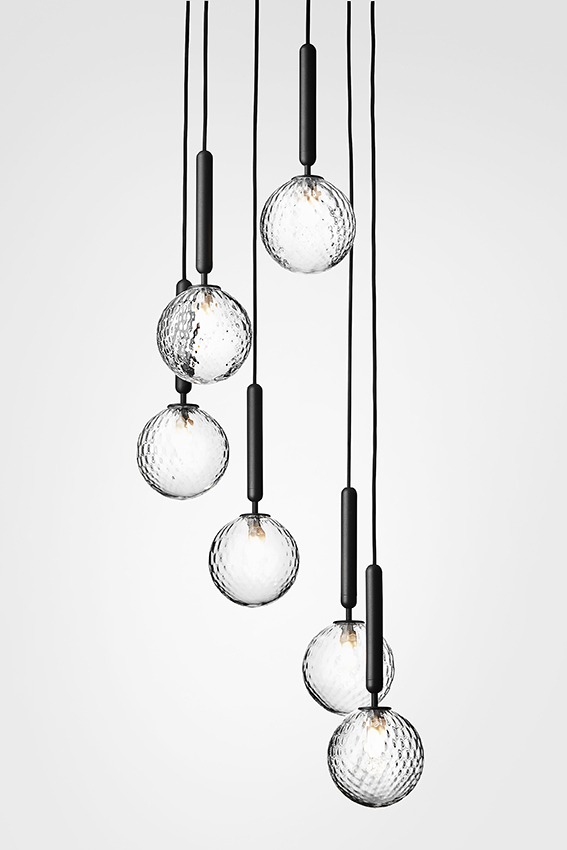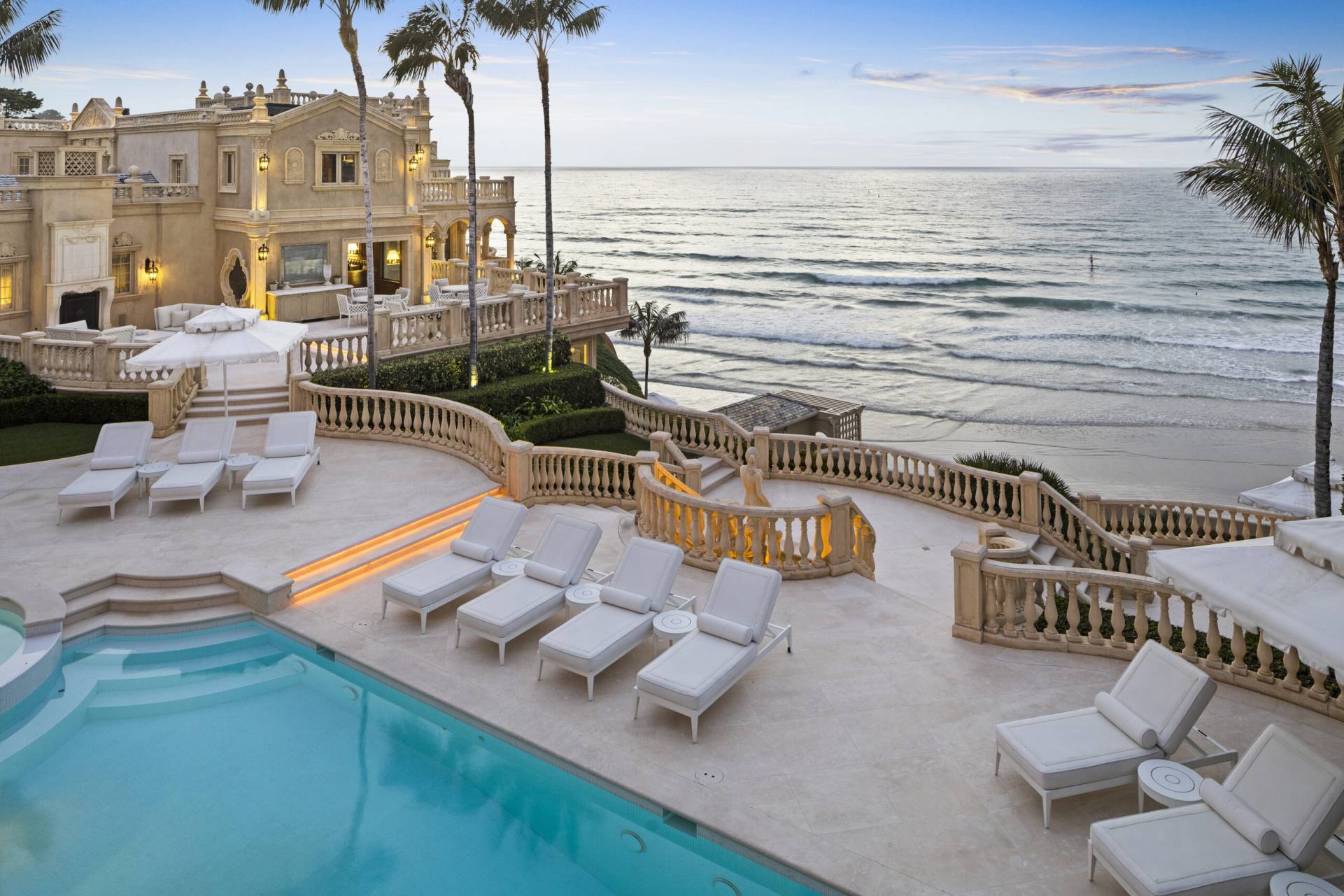
Photo by Rick Chaffiotte Photography.
Interior Designer Marissa Stokes aims for designs that are classic and timeless. And says don’t overlook the ceiling.
For designer Marissa Stokes, home has been a variety of places. Home was growing up in New Jersey, where creative parents and a need for change led to an intense love for interior design at a young age. Home was also New York, where she earned a degree from Parsons School of Design and worked her first jobs at elite design firms, including David Kleinberg Design Associates, Victoria Hagan Interiors and Jayne Design Studio. And now as an accomplished designer, home is more than just a place — it’s every threshold she passes, every piece of furniture she chooses, every decision she makes in order to help craft the perfect space for her clients. We spoke with Stokes about her experiences in the industry and how her love of interior design has transformed her career so far.
How do you think living in New York affected your design style and preferences?
You’re just exposed to so many amazing things, being in and around New York City. The architecture alone, having incredible museums at your fingertips. I also went to school in NYC; I think that was an incredible experience, but also had a huge influence on my design aesthetic, just having everything at your fingertips, between different cultures, food, architecture. I feel fortunate to have lived there and so close to there still now. I love New York City.
When was the first time that you ever thought about working in design?
I really have always wanted to be an interior designer from a very young age.… I think it’s because my parents are both very creative people, always doing things to improve our home.… My dad made furniture, we even had a woodshop in our basement. I just had this love for transforming spaces and the process, and I just fell into it very naturally.
Did you learn wood craftsmanship yourself?
Yes! I had all the tools at my fingertips in the shop, and I am still able to use them now, a bandsaw, a tablesaw, et cetera. We also had a sewing machine, so I grew up sewing at a young age — we’d be making window treatments and pillows. I was always transforming my personal space, shifting things around, changing them or painting them. Making them look different. It was just something I always loved to do, and still love it.
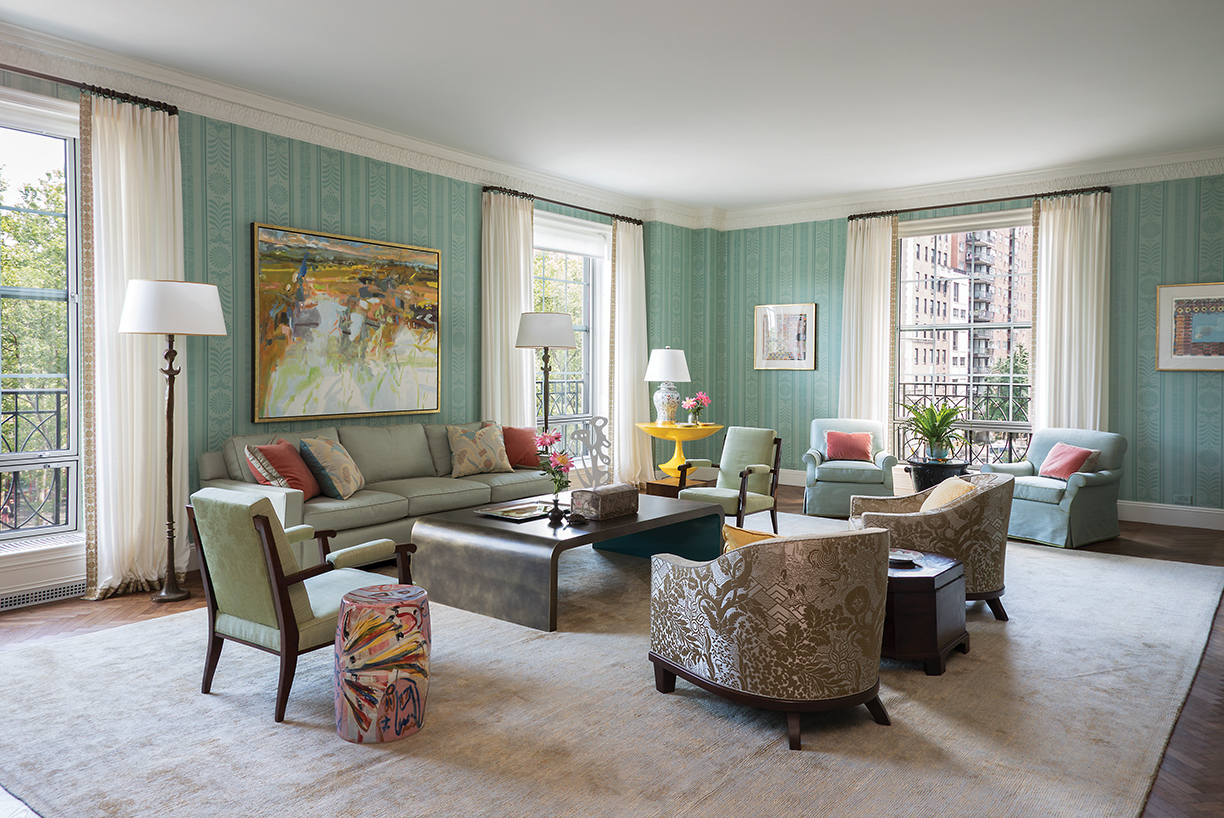
A bright living room situated in an Upper East Side apartment.
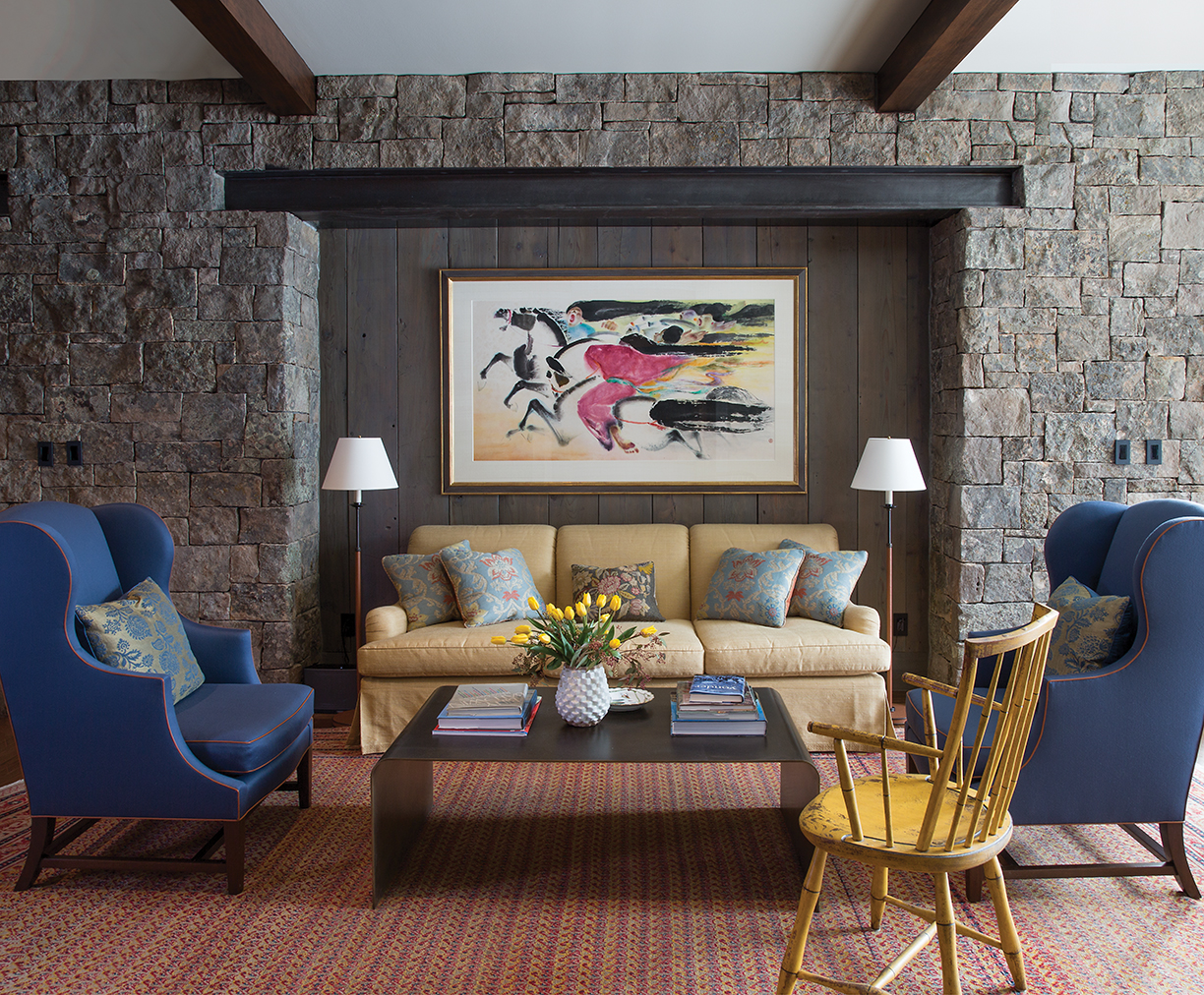
The corner of a library in a Montana lodge.

A Mediterranean Revival home on the Intracoastal in Palm Beach.
Above photos courtesy of Jayne Design Studio.
Why do you do what you do, what about art and design draws you into doing it every day?
I love making people’s dreams come true. There’s something so rewarding about helping a client transform their space so it’s not only functional, but beautiful. In terms of art and design, there’s so many artists and creatives out there who are doing incredible work, and I’m being exposed to them, just learning and growing. It’s another reason why I love what I do. Every day is different and I just love that.
Are there any activities outside of work that help inspire you or your work?
Outside of work, I’m always trying to get out in nature, go for a walk or hike — nature is always inspiring. I feel like I can always pull things from that. I love to travel as well, even though it’s been a bit difficult to do so.
Where’s somewhere you love or would love to go?
My dream place I’d love to go is Greece. It really offers everything. It has ancient and historical sights, of course, but also beautiful landscapes and amazing food.
What has been your favorite project to do?
I worked on a project for Jayne Design Studio in Palm Beach. It was my first project as a senior designer for the firm. It’s a Venetian-inspired home on the Intracoastal. The clients were art collectors who wanted to enjoy the views and display their art. We designed and decorated a home that was quiet, clean and sophisticated to balance their collection and the architecture. I loved the home, its location and the clients. I will always have a soft spot for it.
When it comes to designing, what is the most important element you have to remember?
Well one thing that tends to be overlooked, I think, is the ceiling. It’s very important to design from top to bottom, to think about ceiling work, a lighting plan, and overall how it’s treated and how it affects the space.
Is there a piece of art in your own home that you would never consider selling?
Everything is here for a reason, so not one specific piece.
It’s always important to surround yourself with things you love, even if it’s a bit eclectic, surround yourself with furniture and art that you love. When you do that, things just kind of work together. There’s no standard.
What do you want people to take away when they look at your work?
I want people to find it classic and timeless, something that could last forever. I don’t want someone to walk into a space and instantly date it. I want the clients to be comfortable in their home for a long time. Keep things sophisticated.
What advice would you give to someone going into design?
Don’t be afraid to roll up your sleeves, you have to wear a lot of hats in this industry. Maybe start with an internship, but, all in all, do whatever you need to do to learn.
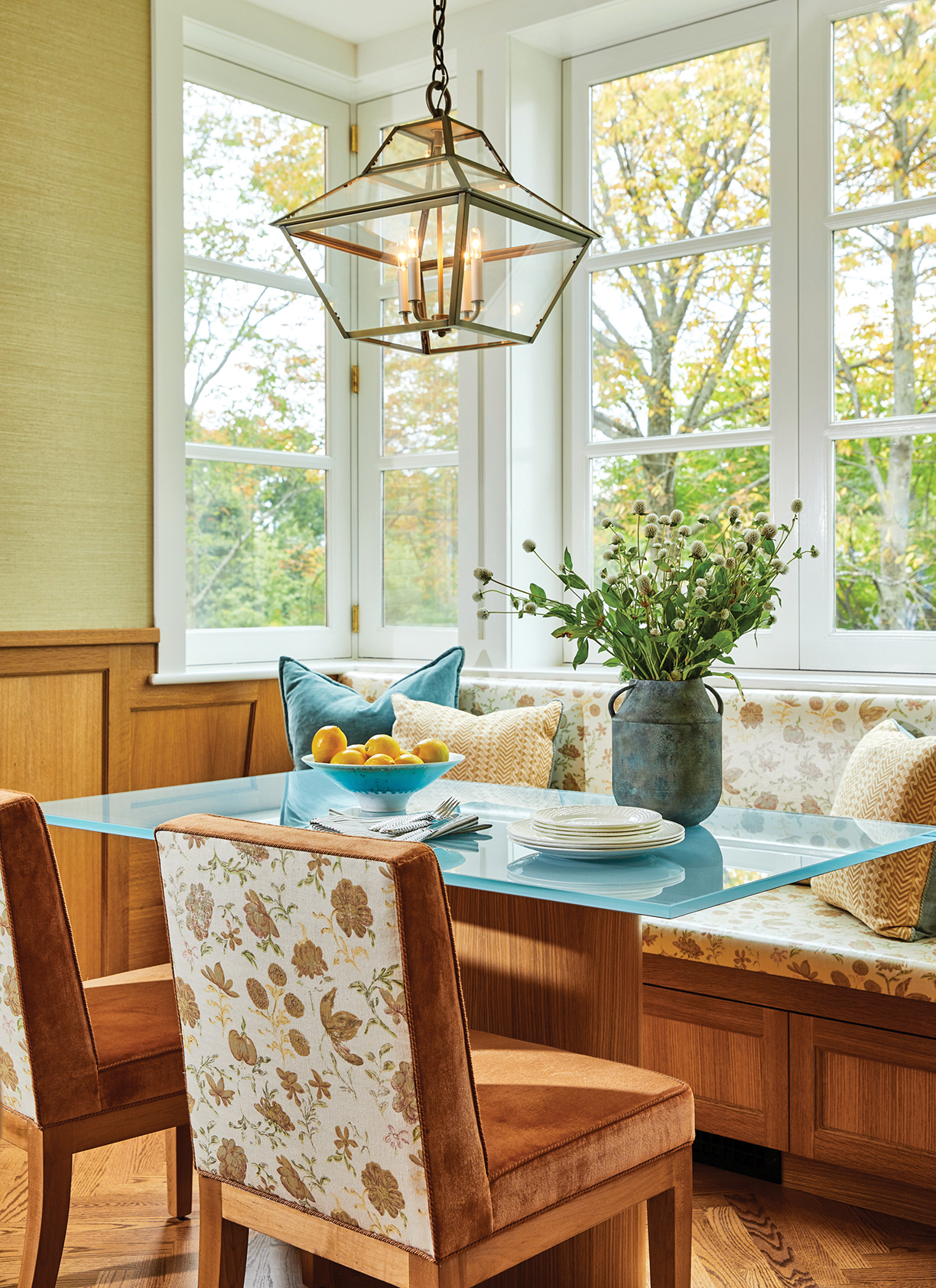
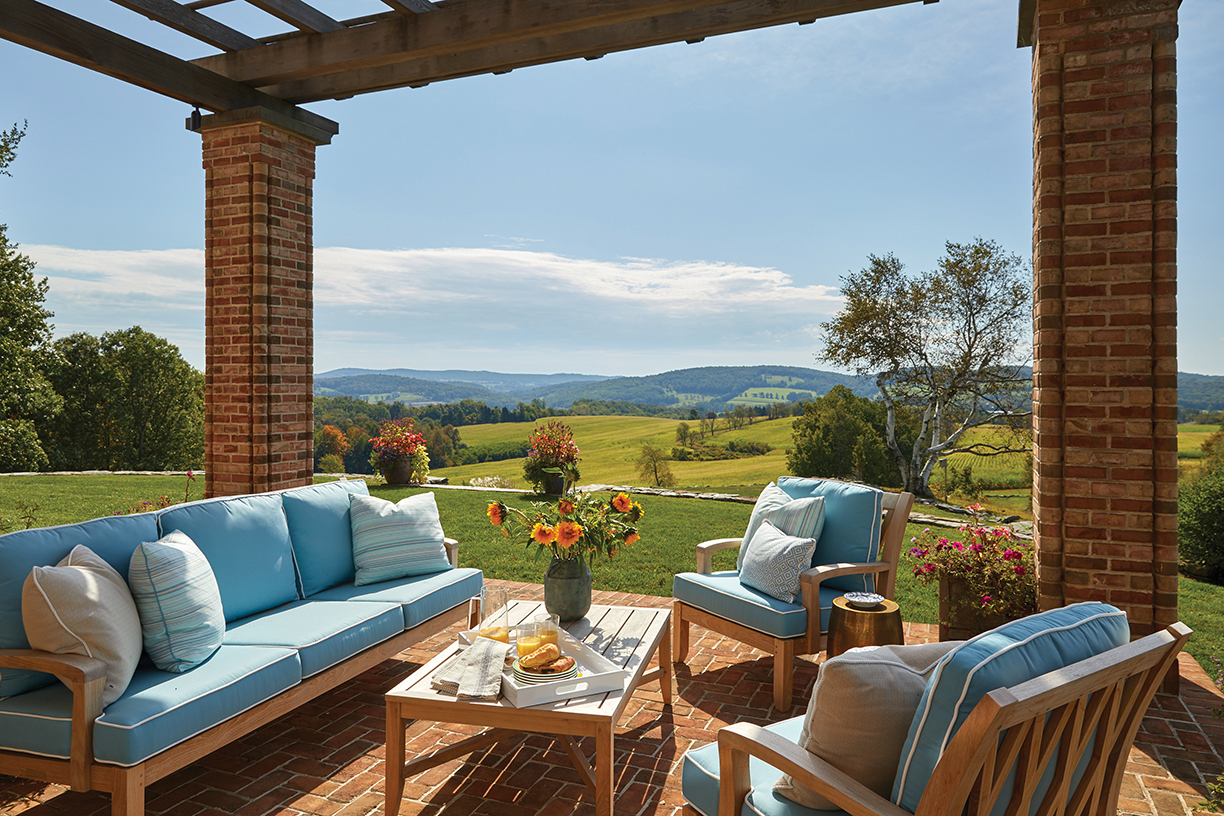
At left: A cozy breakfast room nook with a custom-designed banquette. Photo by Aaron Thompson.
Above: An outdoor terrace overlooks Dutchess County. Photo by Aaron Thompson.
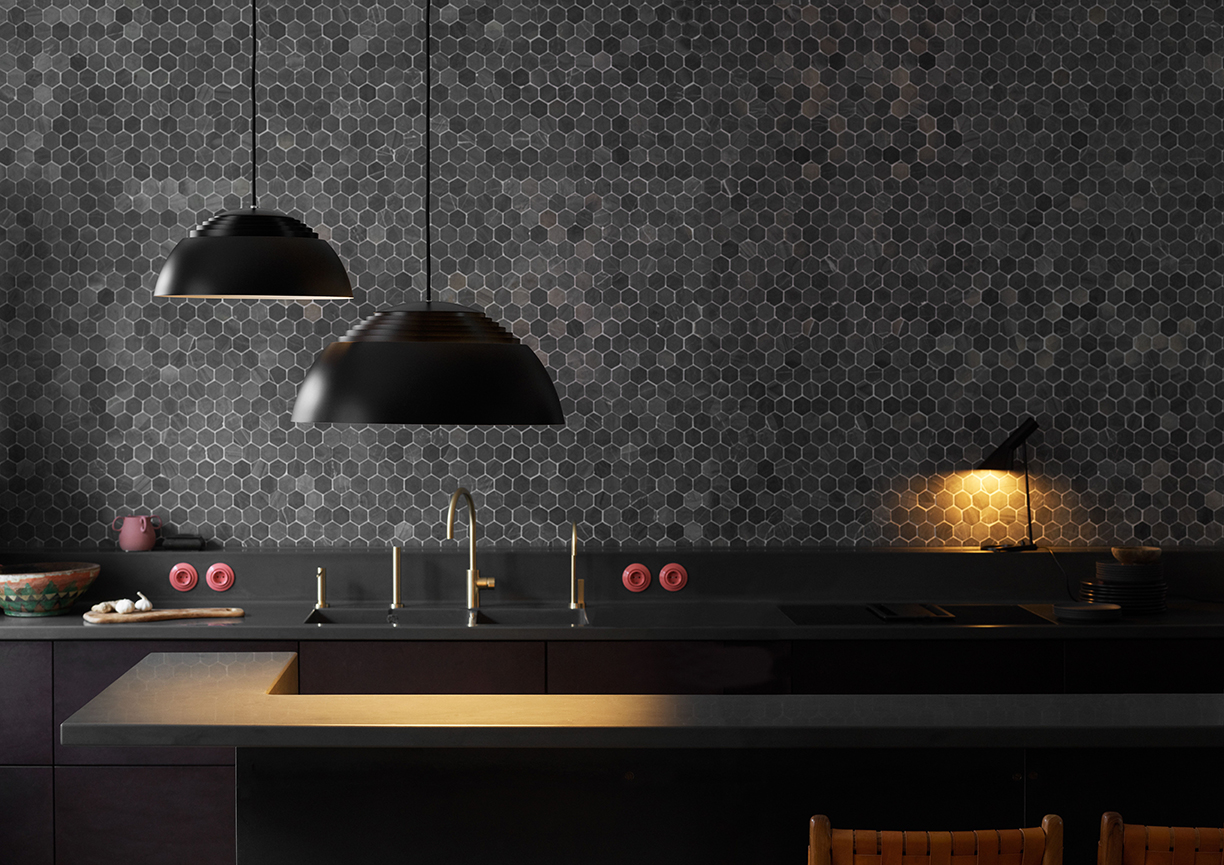
Ask any stylist the key to a successful shoot and you’ll find yourself in a conversation about lighting.
More than just aesthetics, it possesses its own emotional language, writing atmosphere and warmth into contemporary interiors. If you or your home are feeling a little under the weather, consider experimenting some with some new lighting. You might be surprised at the life it brings.
To help you get started, Chaplins Furniture has created a shortlist of the best new launches this season…

On the Move
Freed from the shackles of cables, today’s best designer lighting its portable, fun and ready to move. Opt for the comfort of a time-honoured lantern or keep things contemporary with a colourful new BELLHOP.
Ideal for study nooks, reading or outdoor soirees, these versatile luminaires reimagine the intimacy of candles for the modern age.
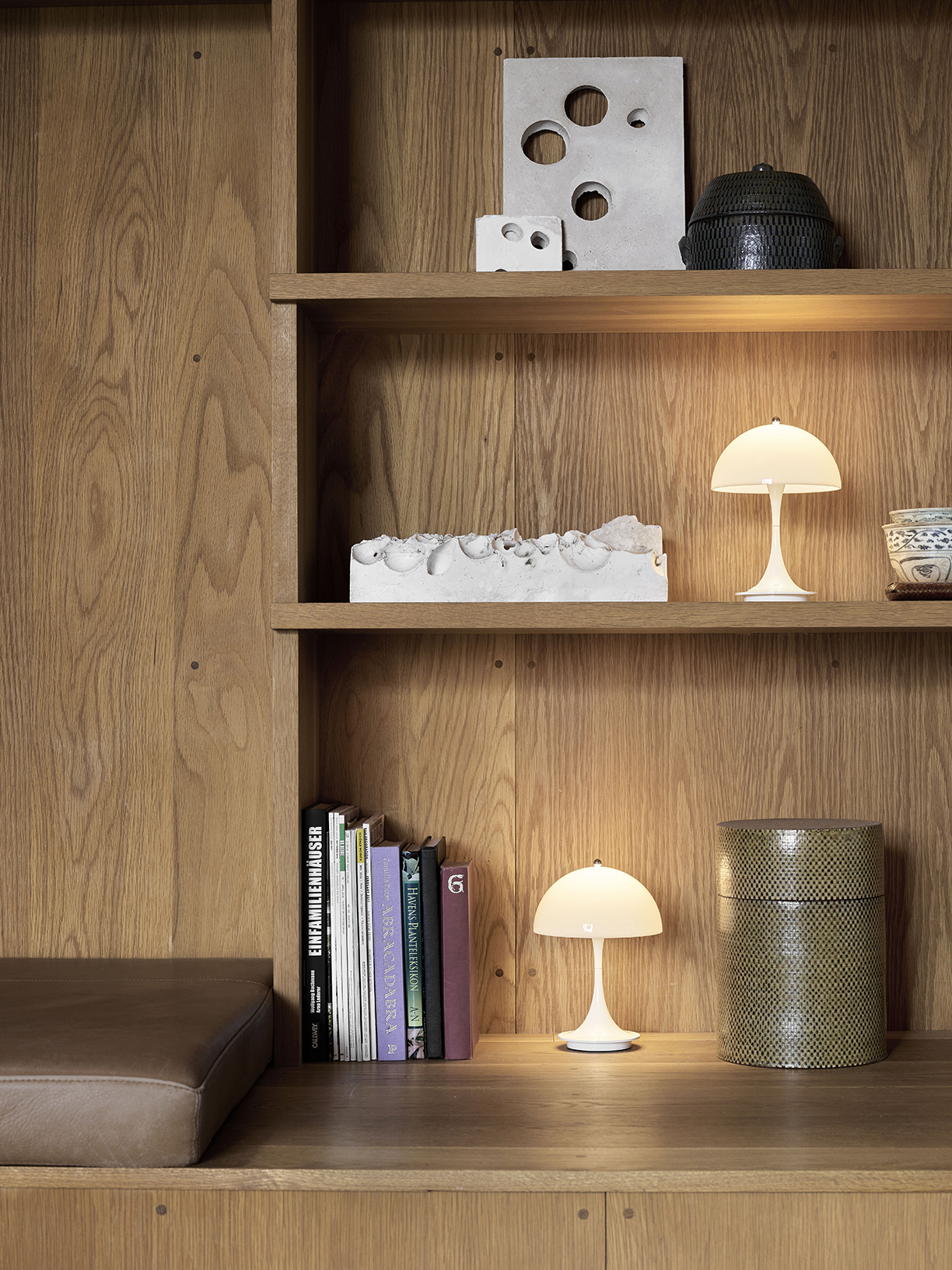
Sleek Scandi
All clean lines and essential silhouettes, sleek Scandi finds beauty in the bare minimum, offering a serene reprieve from the clutter of contemporary life. Leading the subtle style stakes are the new POST WALL LIGHTS by Muuto.
Thanks to a system of magnetic wall brackets, they can be arranged in striking linear configurations, with 360 degree swivelling bulbs and touch-controlled dimming.

Back to Black
In 2020, designers are experimenting with classic drama, revealing a host of iconic designs in sleek matt-black colourways. Seductive and bold, the new palette feels fitting for this time of year, updating winter homes with a little monochrome magic. A new favorite? The New PH Artichoke in BLACK, a daring design statement if ever there was one.
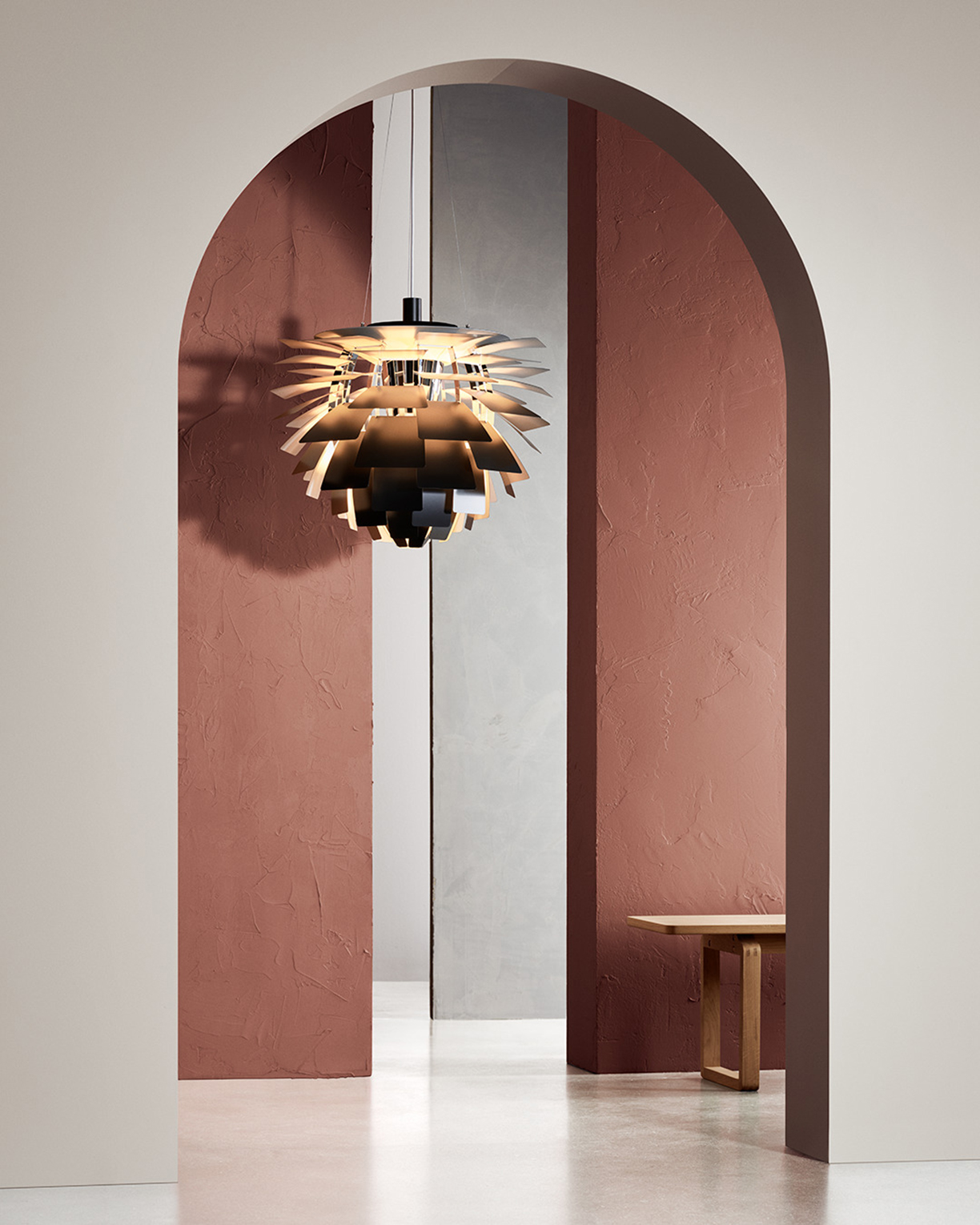
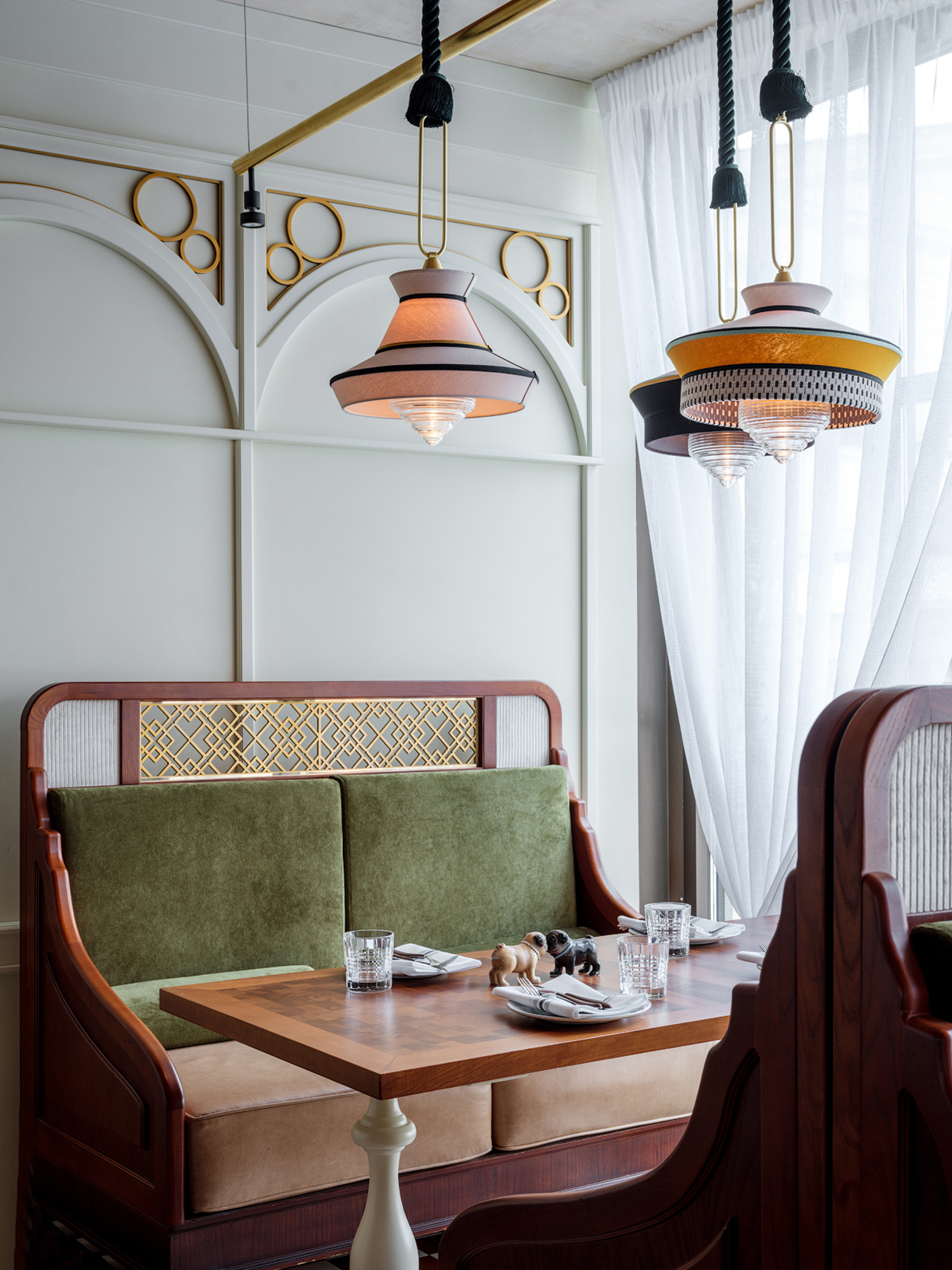
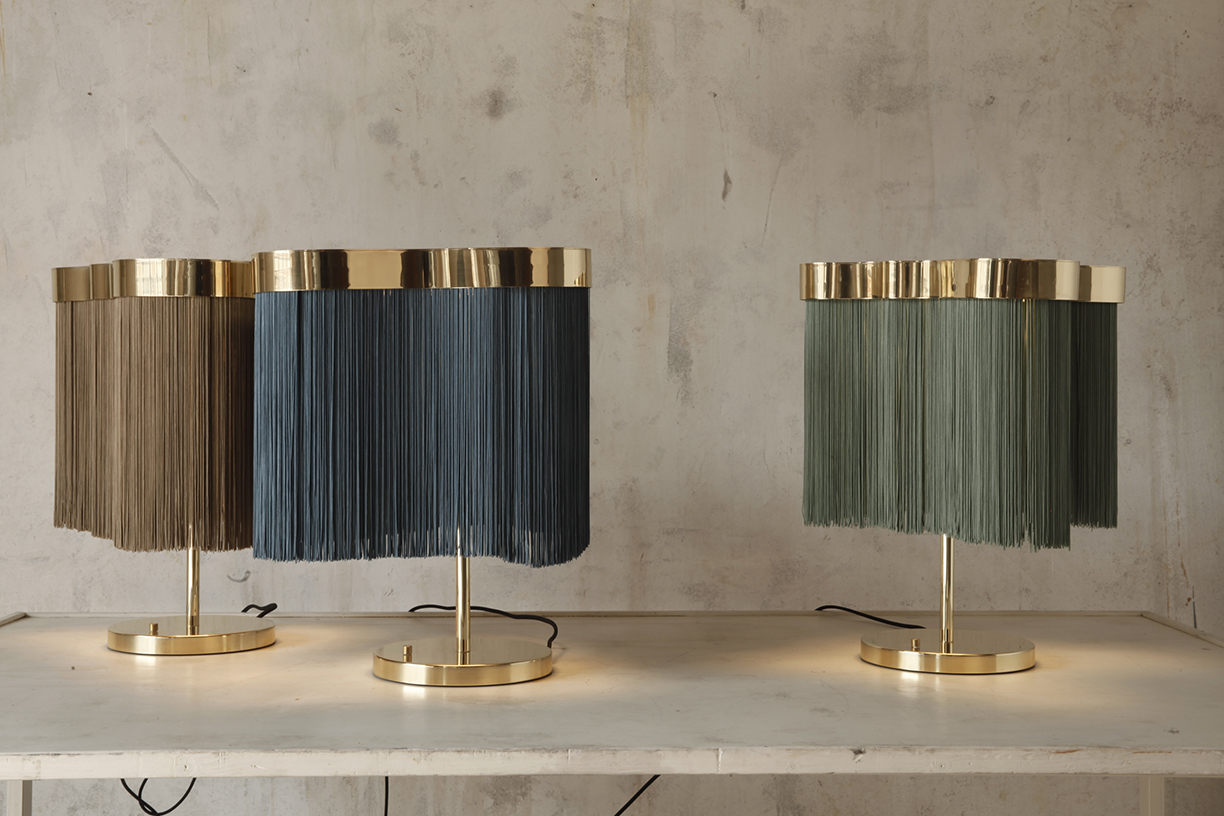
Deja-Vu
We couldn’t sign off without mentioning a handful of new retro lights that are making waves in maximalist circles. Boasting everything from 70s fringe through to art deco prints, these funky designs pack a serious punch, with island culture inspiring the creation of the new ARCIPELAGO LAMPS and CONTARDI’S extended CALYPSO collection.
All photos courtesy Chaplins Furniture.
With a sleek, modern style becoming the new trend in home design, chandelier makers are turning from the traditional designs to modern light fixtures instead. Not only do they add an elegant and modern piece to the room, but they’re becoming pieces of art in their own right.
The creativity that goes into designing and manufacturing these modern chandeliers is pushing the boundaries on the line that constitutes furniture and works of art. With that said, here are some tips on choosing which modern chandelier is best for you:
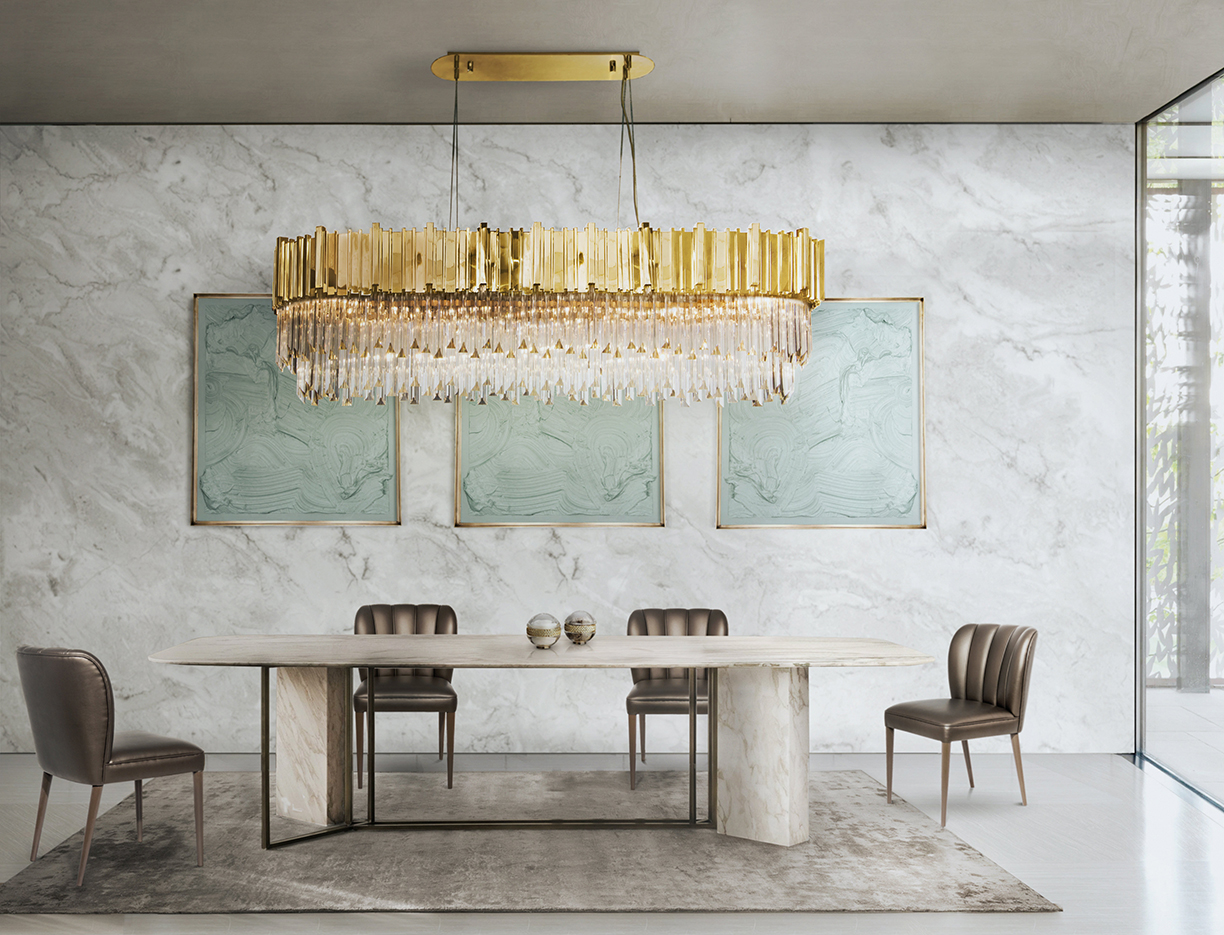
Photo courtesy of Covet NYC
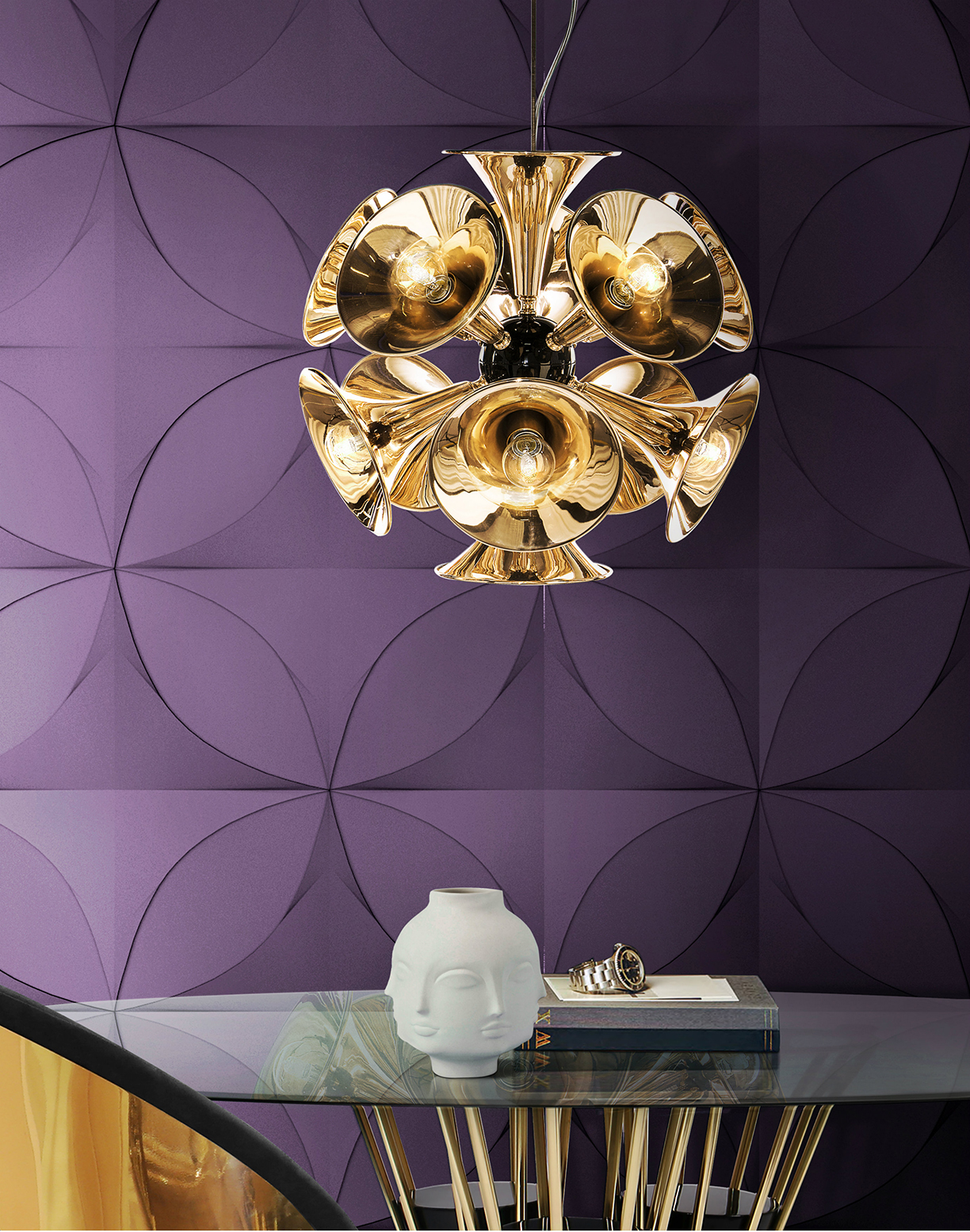
Photo courtesy of DelightFULL
1. Get Creative with Material
With any modern chandelier, the material matters. Getting creative with the material used to create the chandelier can add a great addition to the room’s decor. Creativity is proven to go a long way in designing the perfect modern chandelier.
The Botti pendant lamp, inspired by the American trumpet player Chris Botti, adds a fun twist by using trumpets as the main material of the chandelier. While still luxurious in its style and design, it adds personality and a conversation piece to the space. While the chandelier is more retro in its style, using a creative material and thinking outside of the box can be beneficial for whichever style is preferred.
2. The Space it Resides
Both small and large chandeliers can be a great addition to any space. It’s important, however, to consider the type of space when choosing which modern chandelier to include in it. For a foyer or room with high ceilings, look for a larger chandelier to create a major focal point. In spaces like dining and living rooms, a smaller chandelier will still be a work of art, yet it won’t take away from the rest of the design in the space.

Photos courtesy of Muse Residences
In recent years, more and more hotels and apartment buildings are getting rid of the traditional designs and replacing them with modern and sophisticated styles instead. The modern chandelier in this residential building is certainly the focal point, simply for its sheer size and elegance. When visitors and residents walk into the building, they are in awe of its design.
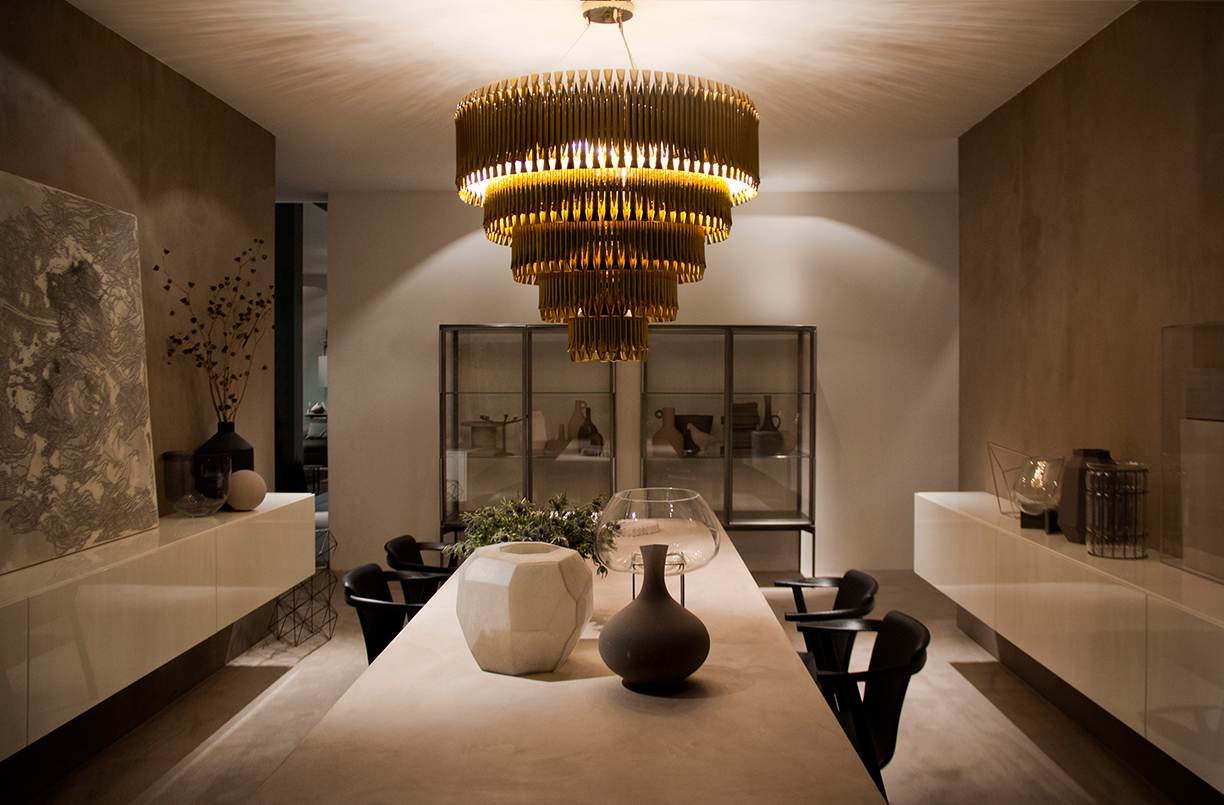
Photos courtesy of DelightFULL
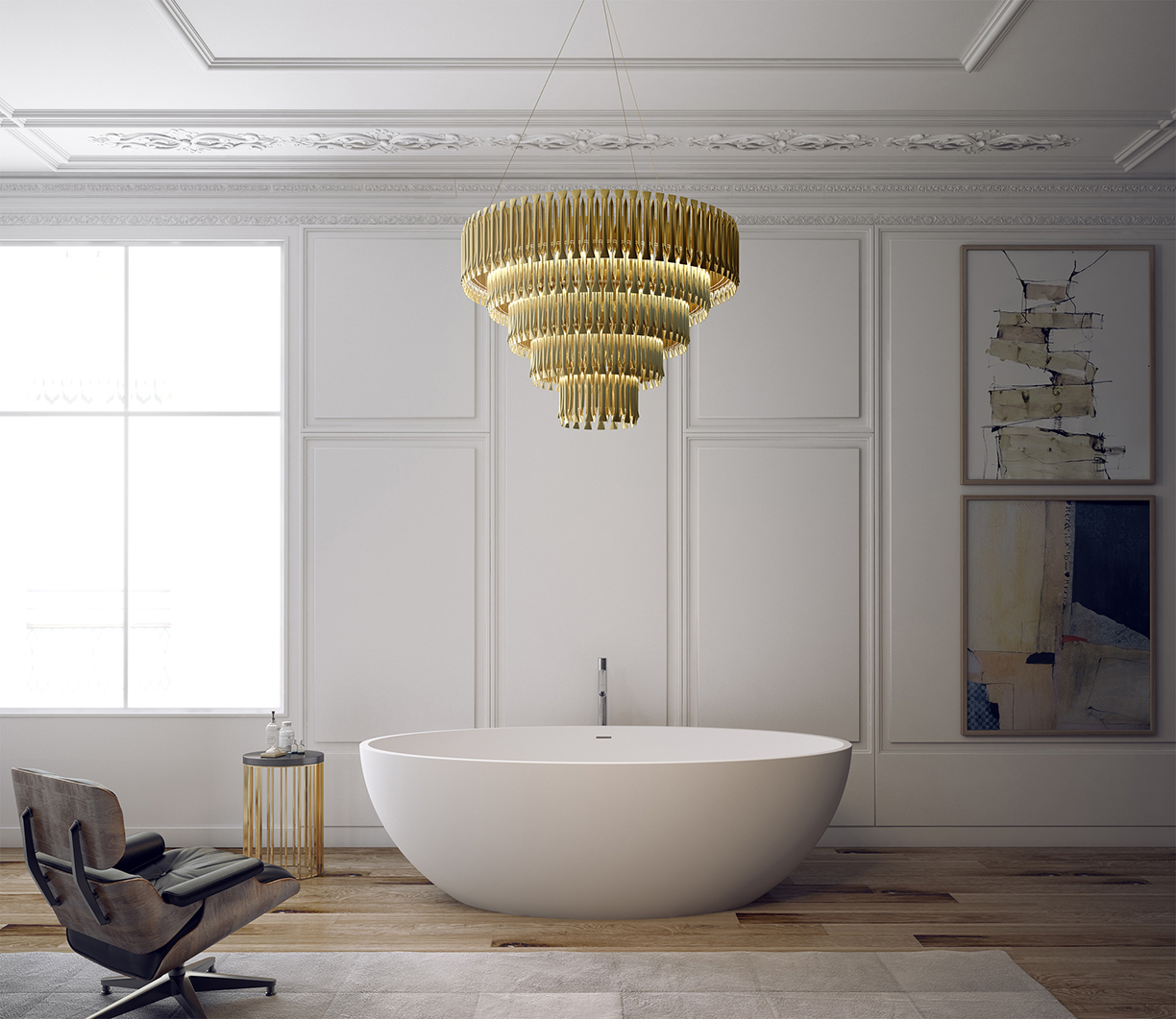
3. The Lighting
In terms of lighting, either a dramatic flair or a softer hue can be a great addition to any space. While the design and material of chandeliers can be similar, the lighting can make a major difference in the atmosphere in the space.
While the first chandelier provides a dramatic light in a darker room, the second provides a more subtle light in a room ample natural light. Both, however, add to the design and atmosphere of the space.
4. A Work of Art
Regardless of the material, design and lighting, it’s crucial to remember the creativity a modern chandelier allows. Whether it’s above a dining table, in the living room as a statement piece or the focal point of the foyer, modern chandeliers aren’t simply light fixtures anymore — they’re works of art.
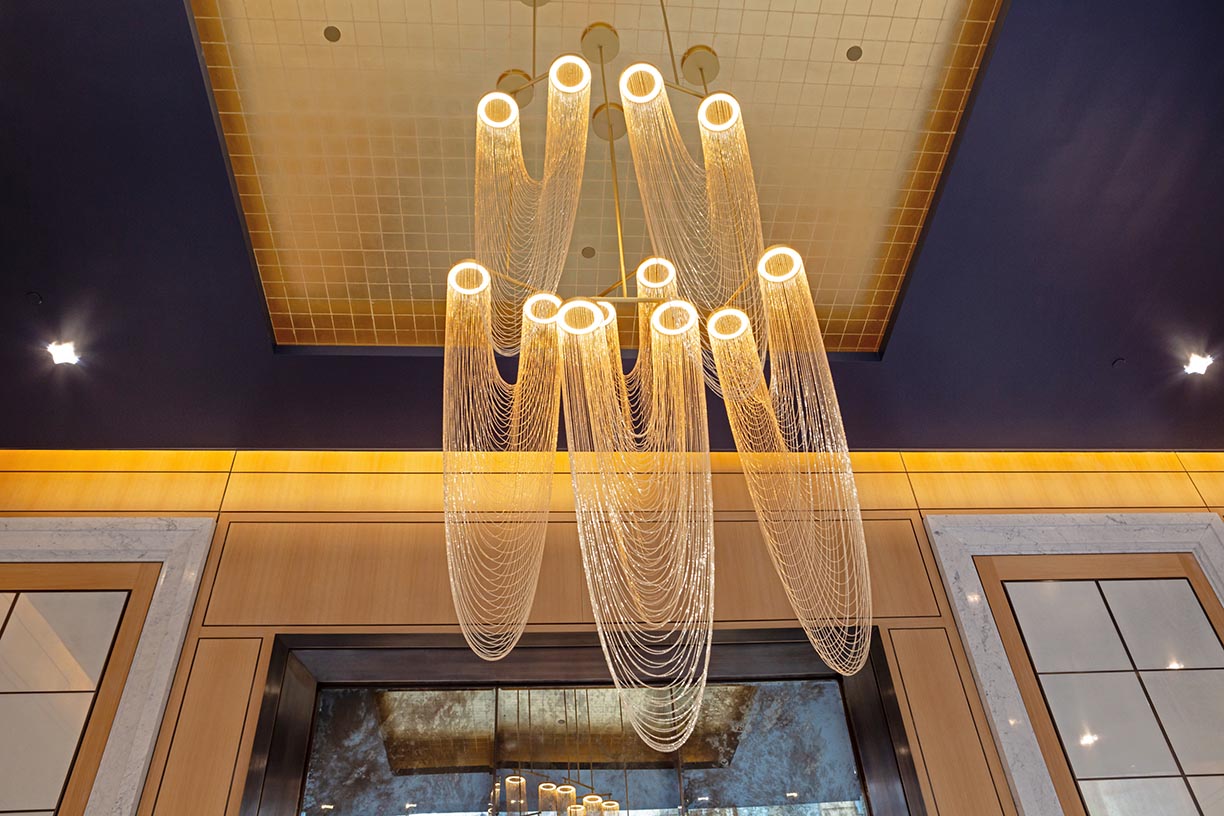
Photo courtesy of The Alyn
Nature has been inspiration to designers and artists since the dawn of design, from floral prints and handcrafted wood pieces to architectural choices meant to showcase natural light. While these pieces aren’t dependent on natural light, their design and function are inspired by nature and its ever-evolving beauty.
In-es.artdesign
Italian artist and designer Oçilunam founded In-es.artdesign in 2003, to achieve their goal of combining art and design is an art in itself. The lamps from the brand’s Out Collection, through a design that encompasses nuances and varied sensations, create the ideal atmosphere for outdoor dinners, or to enjoy relaxation under the sun or starry sky. After dark you will be able to illuminate the garden or the terrace with a variety of shapes and colors, adaptable to any type of space.
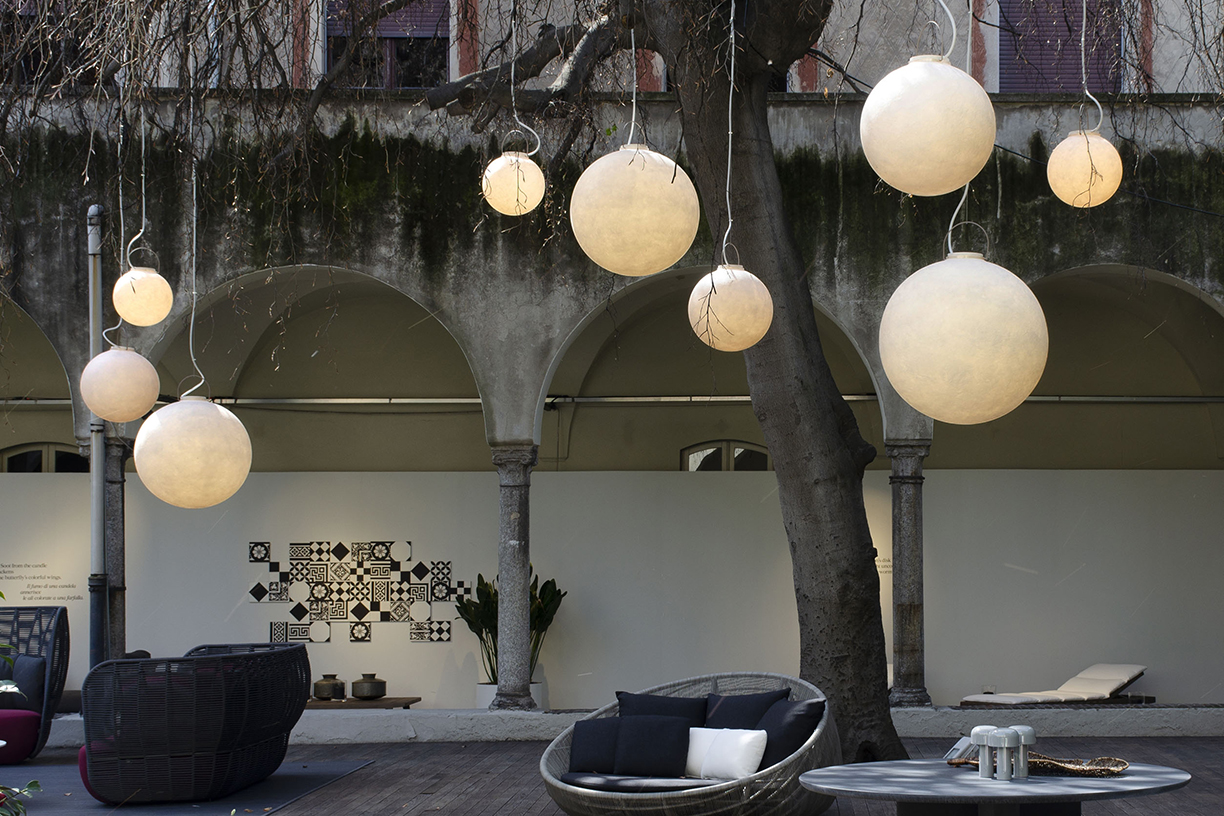
Photo courtesy In-es.artdesign.
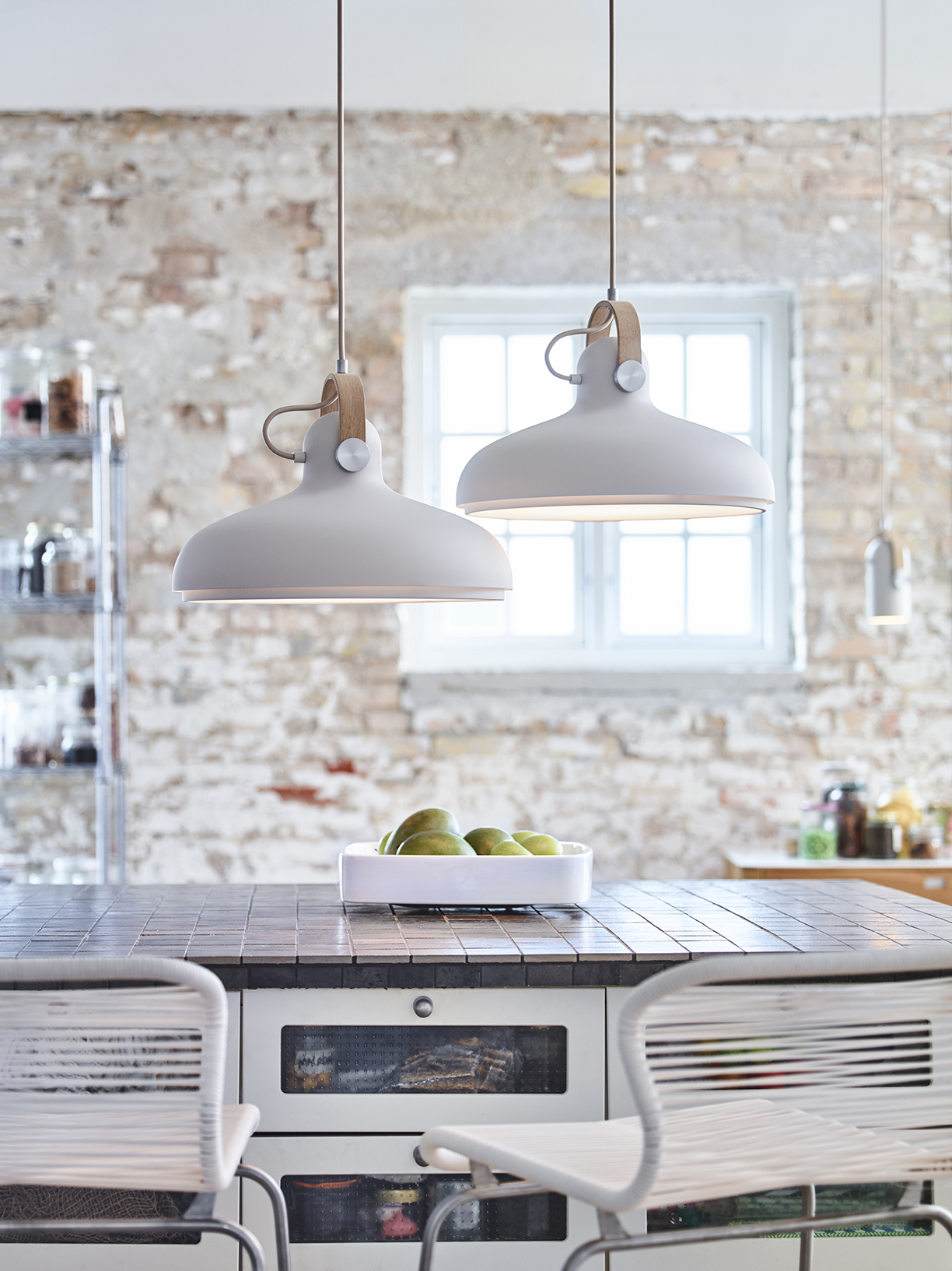
Photo courtesy HolzDesignPur.
Le KLINT
Traditional Danish company LE KLINT is known for its design lamps. Taking into account new trends and technologies, the LE KLINT luminaires are a symbol of modern Danish design, without neglecting the integrity of the company founded in 1943. In addition to folded lampshades made of paper and plastic, LE KLINT’s latest CARRONADE series will also feature aluminum luminaires with wood in elegant industrial design.
The Nordic design luminaires from LE KLINT receive their industrial charm primarily through the mix of natural materials like aluminum and wood: while the lampshades are made of aluminum, the bracket consists of light oak or dark walnut wood. Laterally set discs of gold-colored brass or silver aluminum round off the design of the CARRONADE lights in style.
For the CARRONADE series, the young Danish designer Markus Johansson was inspired by 18th century ship cannons, which is evident both in the form and in the material selection of the luminaries. All CARRONADE luminaires are also individually adjustable and can therefore be easily adapted to the respective room situation.
“I conclude that design, for me, has to be a perfect combination of function and form, which conveys emotions, that subtly affects us as humans, while simultaneously, enhances our daily experiences,” says Johansson.
The combination of the individual CARRONADE luminaires results in modern lighting concepts. While the CARRONADE pendant luminaires in different sizes illuminate, for example, the dining room table, the floor lamps CARRONADE low and high create atmospheric light conditions in the living room.
Fritz Fryer
With Summer now upon us and gardens in bloom, Fritz Fryer offers the Gorsley Pendant light, a copper rose pendant shade handmade exclusively for Fritz Fryer by a local artist and blacksmith.
Using two sheets of copper, the form is made by hand and is then worked on to create the depth of color that copper can achieve, creating the unique, floral design of the Gorsley. It can add a different dimension sitting above a dining table, or over a breakfast bar; it can be clustered, hanging at different drops for impact; or hang it above a bedside table for a feminine touch.
Beautifully organic in shape; the Gorsley is not only a gorgeous looking light but a piece of art in its own right.
Photo courtesy Fritz Fryer Lighting.
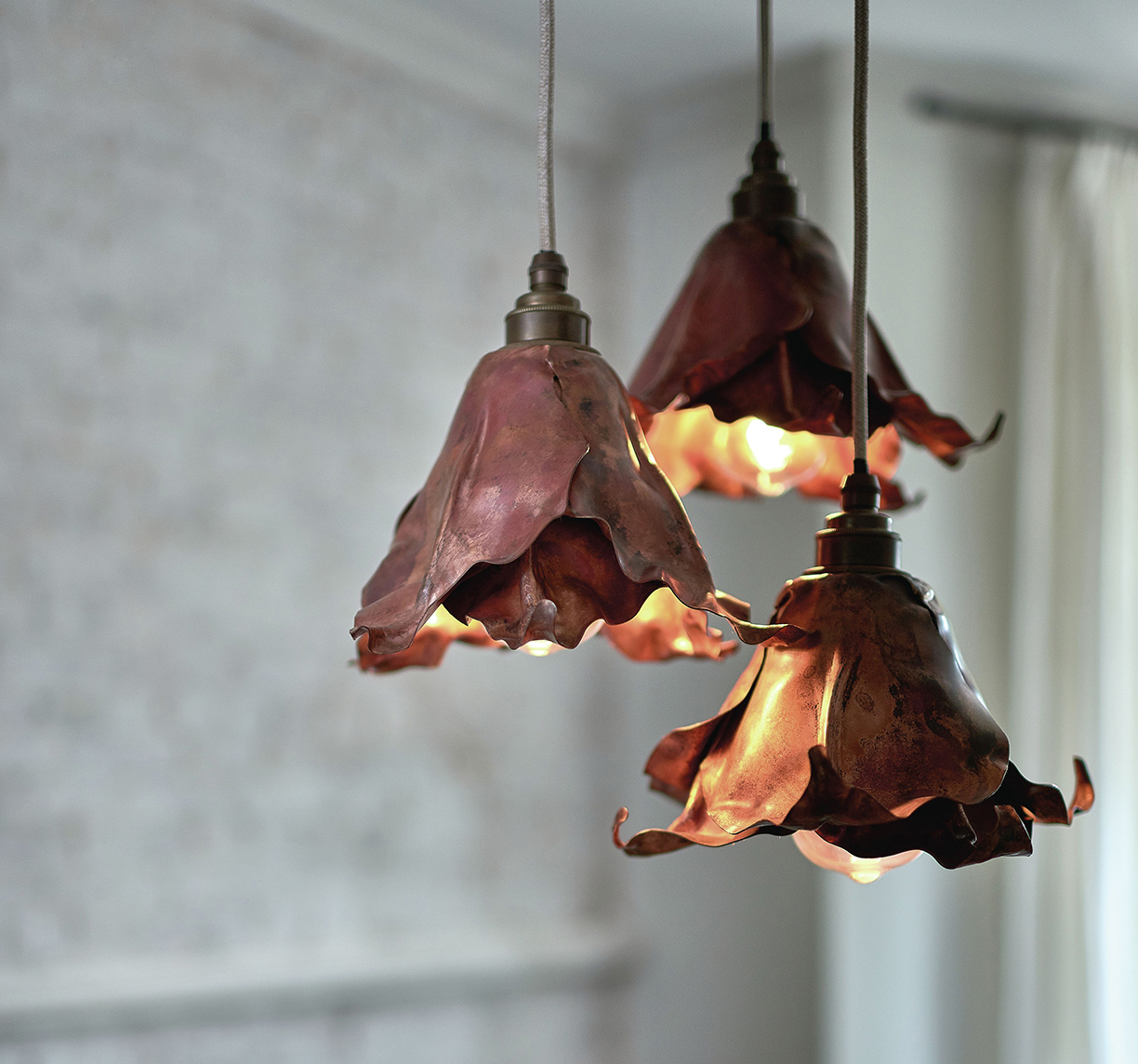
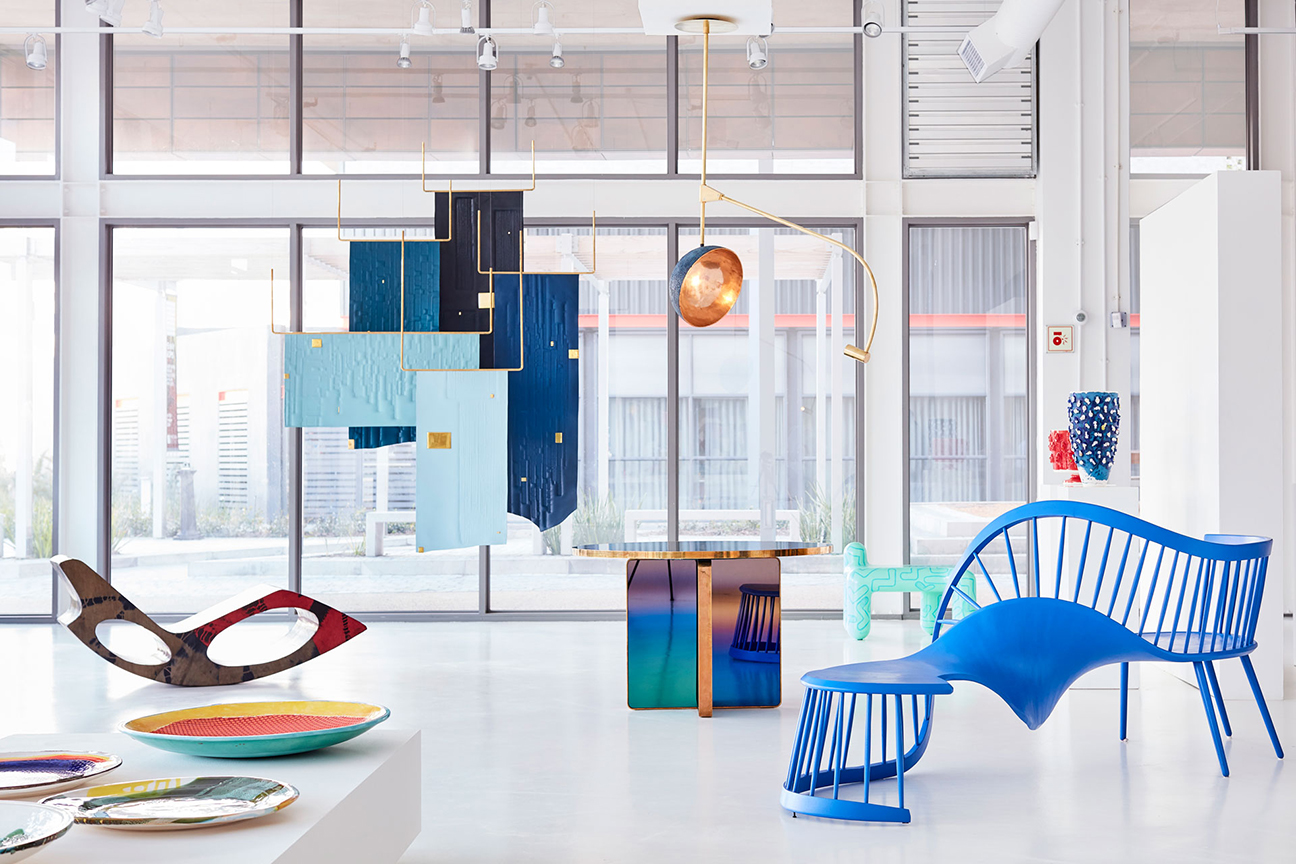
With an upbringing immersed in creativity, designer, maker, crafter and artist Jesse Ede has been surrounded by design and art for as long as he can remember.
Drawn to more natural materials, Ede focuses on being completely unique and not fit into any particular aesthetic. This sense of originality is prevalent in his numerous collections of lunar-themed art and fixtures, particularly the “Orbit” collection.
An evolution from his first light piece called “Eclipse,” “Orbit” is inspired by the “beautiful movement of the galaxy’s moons around their planets,” according to Ede. The piece features elegant metals like bronze and brass that add a dimension of color and texture to the moon-like piece.
Ede prefers to “capture the rough nature of organic surfaces,” he says. He does this by manipulating them to expose the contrast between the material itself and the man-made processes that form them into sculptures. Ultimately, he looks to celebrate the rawness of uncontrollable outcomes, from processes that are uncommonly used.
Much of his life has been spent in workshops and studios, allowing him to naturally acquire a vast range of skills. “My father was an artist and carpenter, so I grew up in and around his studio from a very young age,” says Ede. “I often feel as though I was born to do this, as though it was entirely predetermined for me.”
Though he spent eight years traveling and working, even working as a carpenter for an Antiguan boat-building, much of Ede’s main inspiration comes from space and the universe, as well as looking to nature itself.
“It’s so tempting to draw your inspiration from other artists’ work, but I discovered at a young age, the natural world itself provides all the inspiration you could ever need, and you never run the risk of looking like one-of-many,” he says.
With an assortment of other moon-themed pieces, including a new cantilevered bronze and stone coffee table entitled “Venus,” Ede continues to work and display his strength in creativity.
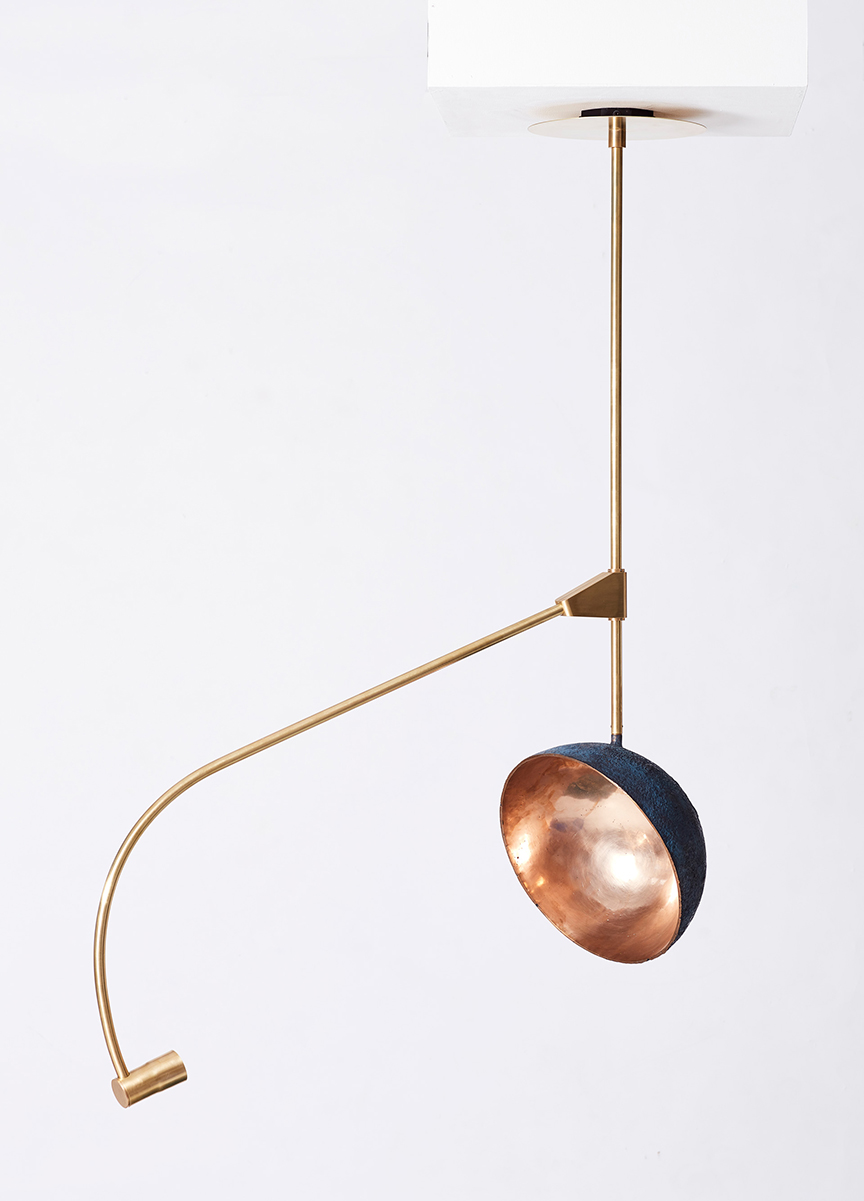
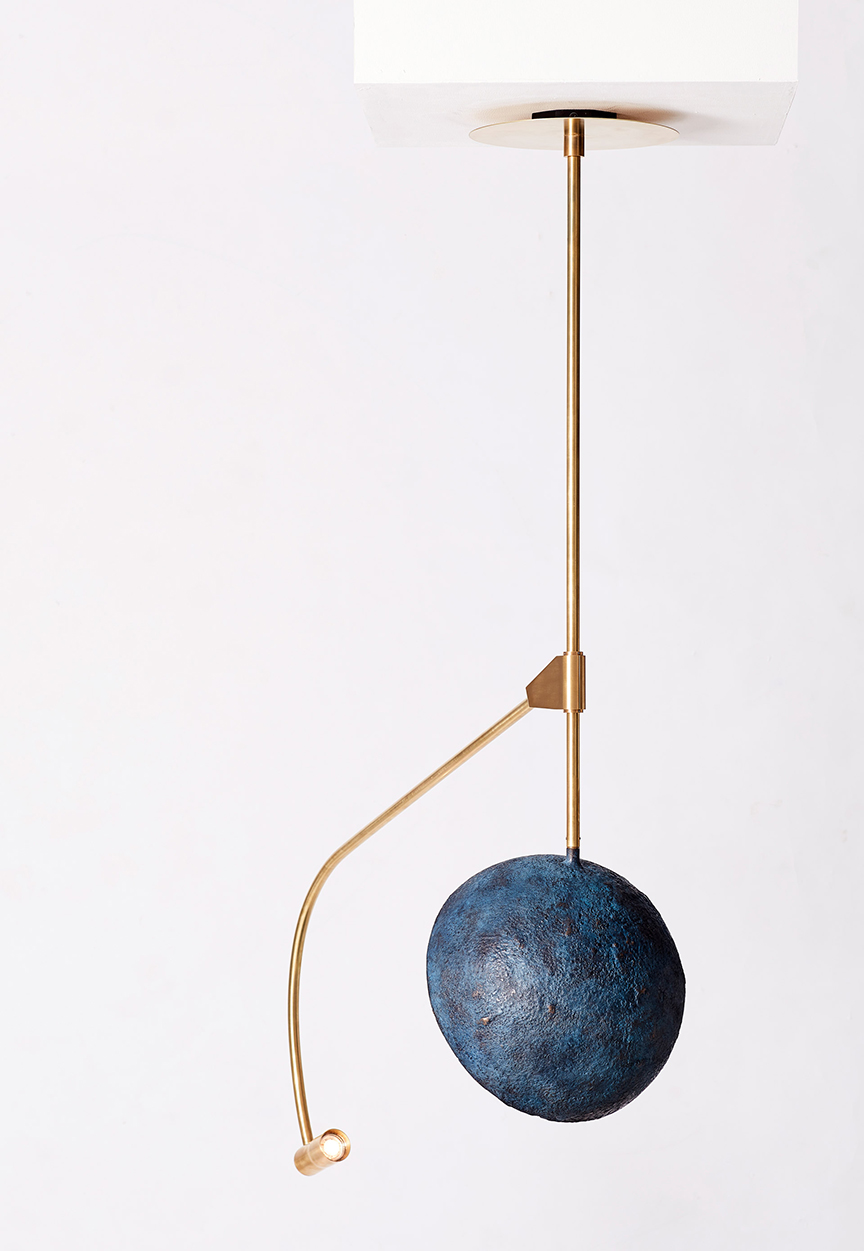
All photos courtesy Jesse Ede.
Making an iconic design statement in a minimal aesthetic, the Dawn to Dusk lighting fixture is the newest product released by the award-winning London-based design studio haberdashery that invites you to experience the magic of sunrises and sunsets from right inside your home.
The intricate design was inspired by the “the memory of the sun” and creating a strong connection with this memory, according to Ben Rigby, creative director and co-founder of haberdashery.
“We want to reach beyond the industry’s current expectations for a lighting product and push for a more ambitious blend of quality, creativity and narrative-driven design all wrapped up in an iconic, useful and aesthetically beautiful design statement,” says Rigby.
To do this, Rigby and other designers chose to work with an uncomplicated design to demonstrate the clarity of a rising sun, as well as identified the perfect color range that would create a strong, emotional resonance.
Available as a table and floor-standing lamp, the diffused circular light source explores a palette of warm colour hues during its transit of the vertical stand, delivering these as direct light, or as a flood of light on a wall.
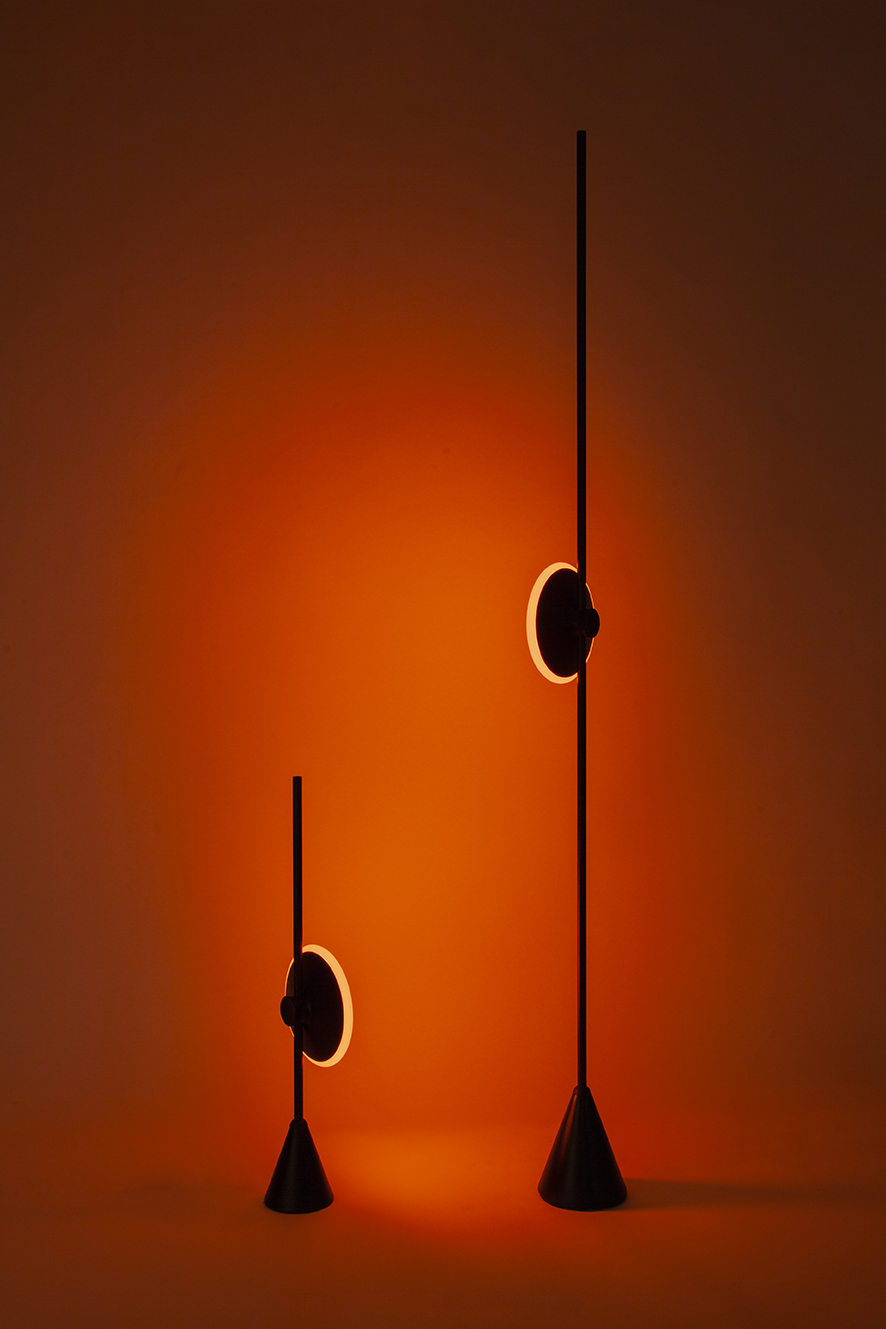
When at the base the sliding light head sits in an off position, and then as it is moved upwards it activates a low intensity red hue, which transitions into orange, then 2700k white light as slid upwards. This custom LED light array, developed by Rigby and his team, replicates the transition of light from the deep, rich red of the late evening to the white light of midday. The light is also capable of rotating 360 degrees around, providing a range of uses from outward facing task light through to a backward-facing ambient light, creating a subtle wash.
Dawn to Dusk is meant to not only showcase a naturally beautiful occurrence but to also utilize this power to support our natural rhythm throughout the day. The high-quality white light helps users to wake up more naturally, while the richer, relaxing red colors help regulate the circadian cycle and prepare for sleep.
“haberdashery believes light is a transformative power in the world; we challenge what is possible with light, and through our products are defining a new category of contemporary lighting,” says Rigby.
All photos & video courtesy haberdashery.
Recently released exclusively with SUITENY, the design brand Nuura is known for creating aesthetic and select lighting options that reflect the riches and joy found in Nordic nature. With the chandelier as a central focus, Nuura offers lighting collections that enrich the room and complete the interior in both private homes and public spaces. By combining delicate design with state-of-the-art technology, the designers strive to create unique quality lighting that has a positive impact on our wellbeing.
“The meaning of Nuura is light and honour,” says a brand representative. “From our base in Denmark, we are inspired by the Nordic light — an everlasting source of inspiration. We wish that our lighting collections will spread life and joy.”
All photos courtesy SUITENY.
Professor and author Mary Guzowski has a new architectural book debuting this summer entitled The Art of Architectural Daylighting. She recently sat down to discuss her interests in daylight as a building material and its importance in the architectural industry.
How can light affect the way a building is designed?
Lighting in buildings is dynamic, changing, and responsive… it’s not static. The building allows people to engage with it depending on how it’s designed — maybe walls open and close, or maybe sections of the home shut down depending on the season. Light is a literal building material.
What was your goal when writing “The Art of Architectural Daylighting?”
In the last decade there’s been a lot of new guidelines and standards, in particular a lot of new metrics around daylighting design that is more analytical. There’s a risk of ignoring the poetic aspect of daylighting. I wrote the book because I feel that it’s important to balance both.
I interviewed 18 architects and selected 12 interpretations of how to bridge the practical and poetic sides to daylighting. Each had different priorities, but there were patterns that I saw from interviews, which I structured into different categories in my book.
What about the process of putting this and the other books you’ve done do you enjoy?
I always write a book about things I want to learn about or don’t know. The most wonderful thing is talking with architects and engineers and learning how they do what they do. I love looking at patterns and trying to discern what other ideas might inform people and how I can be a channel for these patterns.
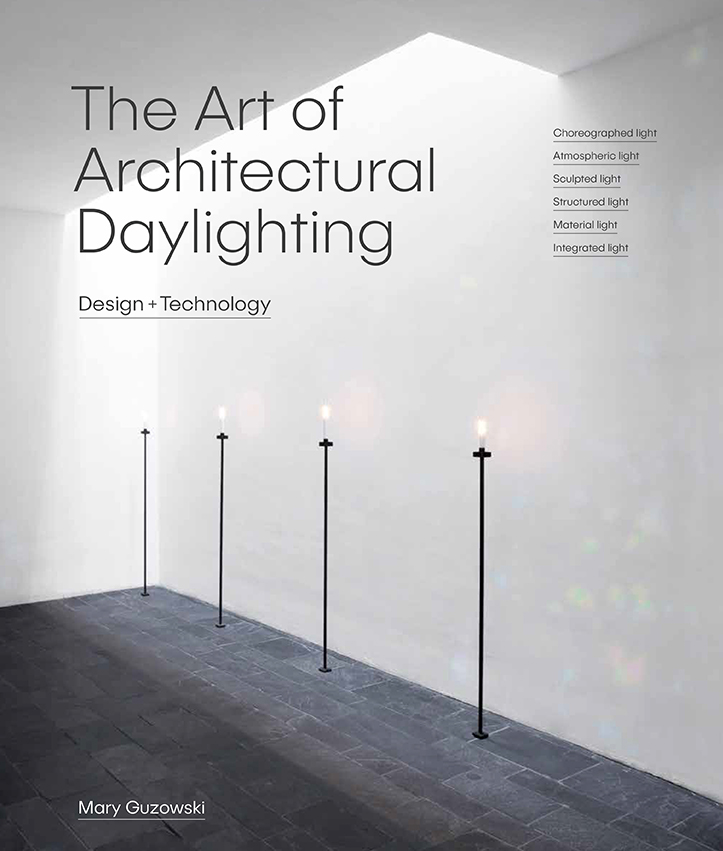
What lessons do you want readers to take from the book?
It was unanimous from all the architects that to study and understand daylighting it’s good to use physical models and put them outside, to understand the phenomenon of natural light. Many of the architects would start with small models and look inside to see how the light changed, experiment with texture and colors, then make mockups of full-scale spaces.
Guzowski has written other books regarding sustainability, including Towards Zero Energy Architecture: New Solar Design and Daylighting for Sustainable Design. She is a professor in the School of Architecture and helped design the MS in Sustainable Design at the University of Minnesota, as well as a co-author of the Carbon Neutral Design Project. The Art of Architectural Daylighting will be available for sale June 25th.


